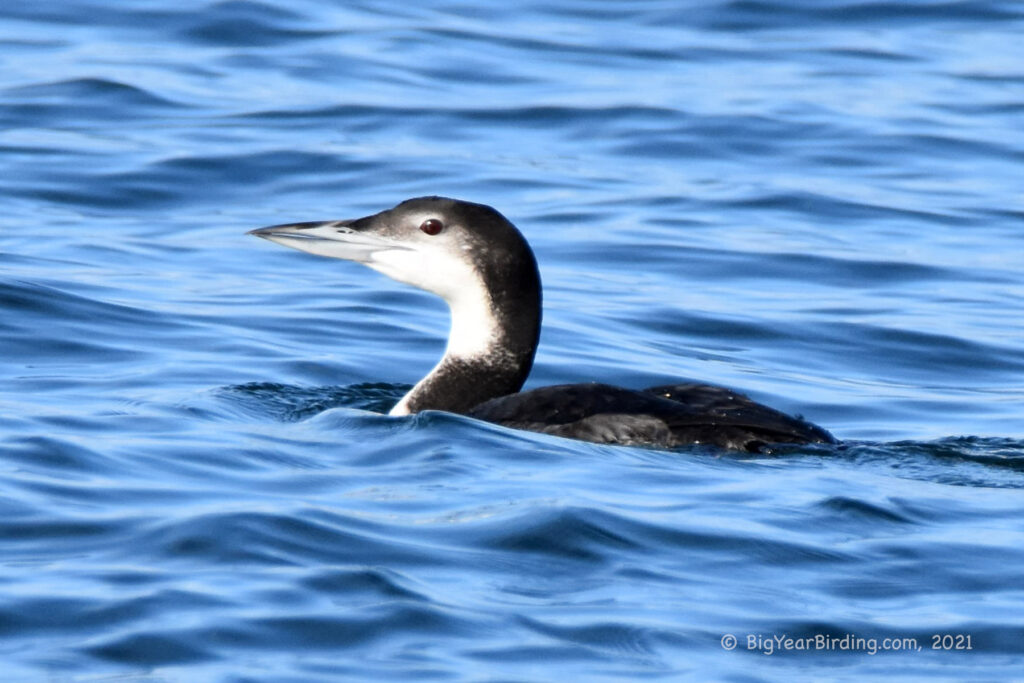
The Common Loon (Gavia immer) is a large, aquatic bird that is found throughout much of North America. Adults measure between 28 to 36 inches in length and have a wingspan of about 4 to 5 feet. They can weigh anywhere from 6.5 to 12 pounds. Their elongated bodies are covered in black feathers with white stripes on their throat, and a distinctive white checkered pattern on their back.

One of the most distinguishing features of the Common Loon is their distinctive calls. They have a haunting, tremolo-like wail that can be heard for miles across the water. This unique call is often used by loons to communicate with each other or to establish territory. Their calls are often described as some of the most beautiful and haunting sounds of the North American wilderness.
Common Loons are migratory birds that breed in the northern parts of the United States and Canada, and spend their winters in coastal areas of the United States. During the breeding season, they can be found nesting near freshwater lakes and ponds, often using small islands as their nesting site. They typically lay 1-2 eggs per clutch and both parents take turns incubating the eggs and caring for the young.
In the fall, Common Loons begin their migration to their wintering grounds. They typically travel along coastlines and large bodies of water, often stopping at suitable feeding and resting locations along the way. During migration, they can be seen flying in loose formations, usually in small groups or pairs.

Despite being a widespread and common species, the Common Loon faces many threats, including habitat loss, pollution, and disturbances from human activity. Conservation efforts are underway to protect this beautiful and iconic bird, including efforts to preserve critical nesting habitats and reduce pollution in their breeding and wintering areas.

